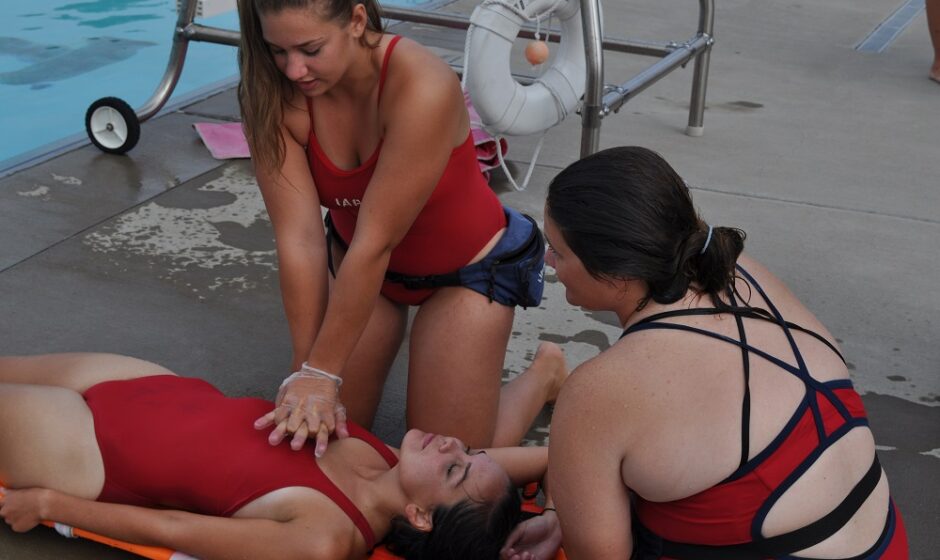The Lifeguarding: Trends and Challenges in Modern Water Safety

Lifeguarding has evolved significantly over the years. What began as a simple responsibility of monitoring swimmers has transformed into a highly specialized field requiring advanced training, cutting-edge technology, and an expanded focus on preventing accidents in aquatic environments. Modern lifeguards must not only be skilled in traditional rescue techniques but also knowledgeable about the latest trends and challenges in water safety. This article explores how lifeguarding has evolved, the emerging trends shaping the industry, and the ongoing challenges that lifeguards and water safety professionals face today.
1. Advancements in Lifeguard Training and Certification
In the past, lifeguards were primarily trained in basic swimming and first-aid skills. Today, however, lifeguard certification programs have become more comprehensive, incorporating a wide range of technical and practical knowledge. Lifeguards are trained not only in traditional rescue techniques but also in advanced CPR, first aid, and the use of automated external defibrillators (AEDs). Many lifeguards now also undergo specialized training in areas like spinal injury management, open-water rescues, and psychological first aid.
Moreover, Lifeguard certifications have expanded to include ongoing professional development. Lifeguards are often required to attend refresher courses to stay updated on the latest techniques and safety protocols. This evolving training structure ensures that lifeguards are equipped to handle increasingly complex situations in diverse water environments.
2. Technology in Lifeguarding
The role of technology in lifeguarding has grown tremendously, revolutionizing how lifeguards monitor and respond to incidents. A key trend is the use of drones and underwater robots, which are capable of scanning large bodies of water to identify potential dangers or locate missing swimmers. Drones equipped with cameras can cover vast areas quickly, giving lifeguards a clearer picture of the situation and allowing them to act more efficiently.
Additionally, wearable technology has made a major impact on lifeguard operations. Wearable sensors, such as heart rate monitors and GPS tracking devices, allow lifeguards to track swimmers’ vital signs and movements in real time. This technology improves safety by allowing lifeguards to detect early signs of distress or behavior that may indicate danger. In some instances, these technologies even enable lifeguards to provide assistance before the swimmer realizes they need help.
3. Improved Safety Protocols
With an increased focus on accident prevention, modern lifeguards are now responsible for much more than reacting to emergencies. Today, lifeguards play a critical role in maintaining overall water safety through proactive measures. This includes educating swimmers on water safety rules, promoting awareness about rip currents, enforcing pool rules, and ensuring proper supervision of children and vulnerable swimmers.
Lifeguards are also responsible for monitoring environmental factors such as water quality, weather conditions, and pool maintenance. For example, changes in water temperature, excessive algae growth, or strong currents can present hazards, and lifeguards must know how to assess and mitigate these risks to ensure public safety.
4. The Rise of Aquatic Safety Education and Public Awareness Campaigns
In recent years, there has been a marked increase in public awareness surrounding water safety. Public service campaigns, often led by government agencies or non-profits, have emphasized the importance of swim lessons, water safety education, and the use of life jackets. These campaigns have been particularly effective in reducing drowning rates, especially among young children and high-risk populations such as individuals with disabilities or those who cannot swim.
Lifeguards now serve not only as responders but also as educators. Many lifeguards are trained to offer swim instruction, host water safety workshops, and lead public outreach efforts. These preventative measures help raise awareness about the dangers of water environments and teach individuals how to stay safe while enjoying water activities.
5. Diversity and Inclusion in Lifeguarding
Lifeguarding has become a more inclusive profession, with greater representation of diverse backgrounds and communities. Increasingly, lifeguard teams are reflective of the diverse populations they serve, promoting a more inclusive atmosphere in aquatic settings. Diverse lifeguard teams bring different perspectives and experiences, which can be crucial when responding to emergencies or communicating effectively with swimmers from various backgrounds.
Moreover, efforts are being made to ensure that water safety services are accessible to all, including underserved or marginalized groups. Community-based programs are helping individuals from various socioeconomic backgrounds learn to swim and gain confidence in aquatic environments, reducing the risk of water-related accidents and drowning.
6. Addressing Mental Health and Stress Management
Lifeguarding can be an incredibly stressful and emotionally demanding profession. Lifeguards are often the first responders to traumatic situations, including drownings, injuries, and even fatalities. As such, mental health support and stress management have become key elements of modern lifeguard training.
Lifeguards are trained not only in physical first aid but also in mental health first aid, learning how to handle the psychological impact of witnessing traumatic events. Many organizations are now implementing programs to provide emotional support for lifeguards, such as counseling services, stress management workshops, and peer support networks. Ensuring that lifeguards have the mental resilience to handle difficult situations is critical for maintaining a high standard of water safety.
7. Challenges in Staffing and Retention
Despite the advancements in training, technology, and awareness, one of the most persistent challenges facing the lifeguarding profession is staffing and retention. Many aquatic facilities, particularly those in coastal or high-traffic tourist areas, struggle to find and retain qualified lifeguards. This shortage can lead to safety concerns, as facilities may be forced to reduce staffing levels or cut back on training.
To address this issue, many organizations are focusing on improving the working conditions and compensation for lifeguards. Offering competitive pay, benefits, and career advancement opportunities are strategies being employed to attract and retain qualified lifeguards. Additionally, organizations are looking at ways to increase the pool of potential lifeguards by providing scholarships, mentorships, and specialized programs aimed at younger generations.
Conclusion
The role of lifeguards has come a long way from its early origins, and modern water safety now encompasses a broad spectrum of responsibilities, skills, and technologies. From advancements in training and technology to the increasing emphasis on mental health and diversity, the field of lifeguarding continues to evolve to meet the challenges of modern society.
As water-related risks change and new challenges arise, it is essential for lifeguards to adapt and stay ahead of emerging trends. By embracing innovation, prioritizing education, and focusing on comprehensive safety measures, the lifeguarding profession can continue to evolve and save lives in aquatic environments for years to come.
Must Read: Wek Now Geeks
Must Visit: https://weknowgeeks.com/




